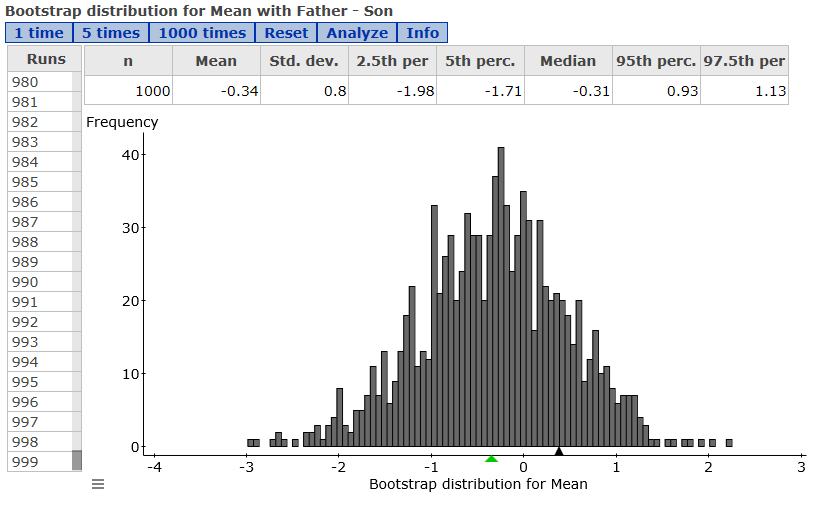Bootstrap – Matched Pairs
This week I began with a bootstrap project for a paired-difference/matched-pairs scenario.
Download a pdf of the Project Here
One of my goals is to get students working with data they have collected, so I had students collect prices for 25 identical items at two stores. We used this for one of the investigations.
Investigation 1
A researched was investigating whether sons are taller than their fathers. My students were provided with 13 matched pairs. I had them find the difference for each pair (d = father’s height – son’s height). They had to determine whether to expect differences that were positive or differences that were negative. This is an important skill when setting up the alternative hypothesis, and I was happy with how my students understood what type of differences to expect.
We applied the bootstrap method to the sample differences, and the results are shown below.
Since the interval from the 2.5th percentile to the 97.5th percentile contained 0, we were unable to conclude that there is a difference between the heights of fathers and their sons. We had a great opportunity to discuss the implication of 0 being contained in the interval – and my students were able to understand that if a difference of 0 is in the interval then it is possible that there is no difference between the two groups.
Investigation 2
Here my students used their data from the two stores in an effort to support the claim that prices at Store A are lower than they are at Store B. We had some interesting results, including groups that reached 3 different conclusions when comparing Walmart and Target (Walmart is cheaper, Walmart is more expensive, no difference).
Follow Up
The following day in class I included a Learning Catalytics session where students were given various scenarios and intervals and asked for the appropriate conclusion. They proved that they retained their understanding, and several students displayed that by sharing their reasoning with the class after the question was closed for responses.
I am looking forward to the day where we cover the formal (p-value) hypothesis test for paired differences to see how well they understand the big picture.
